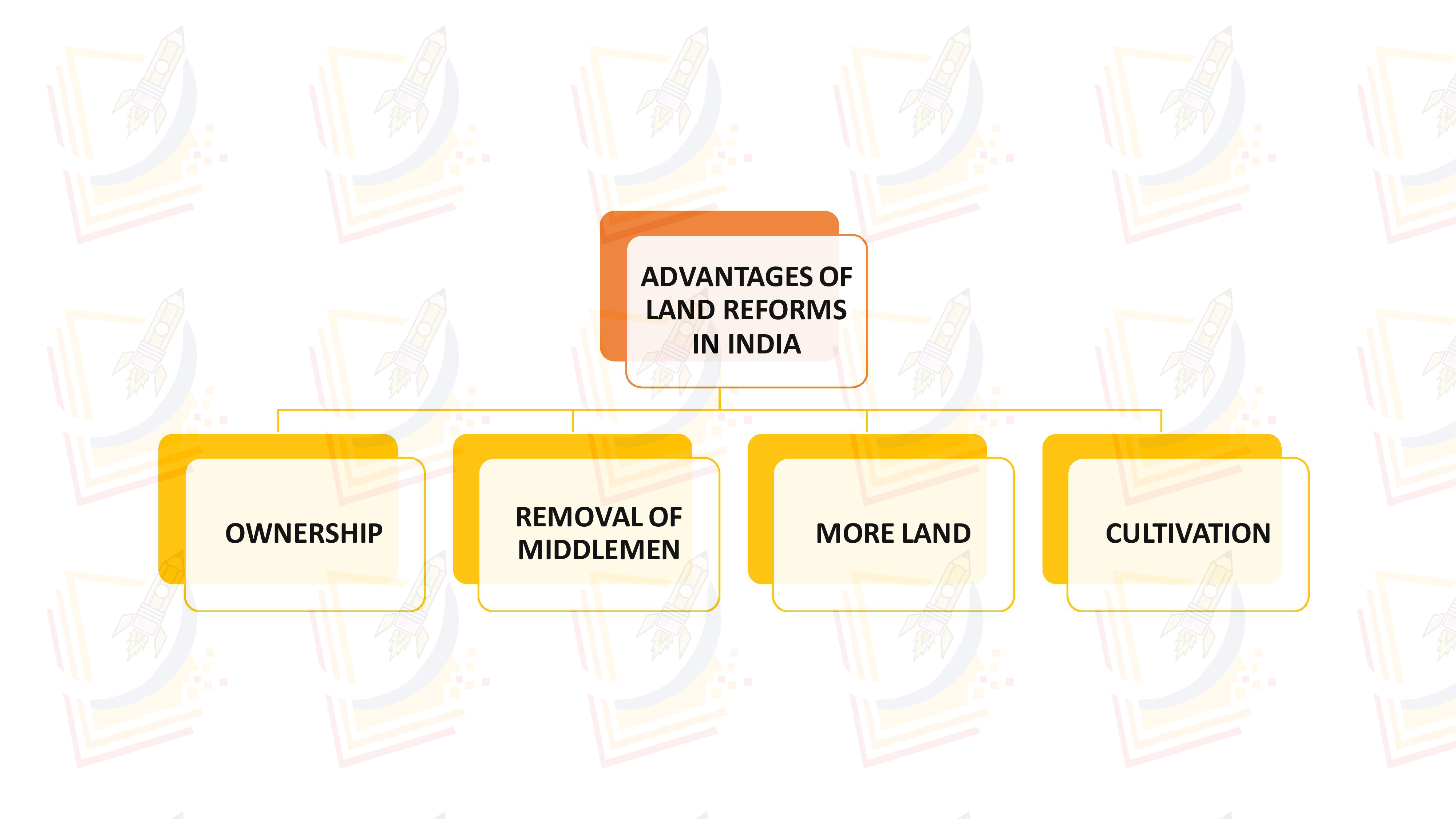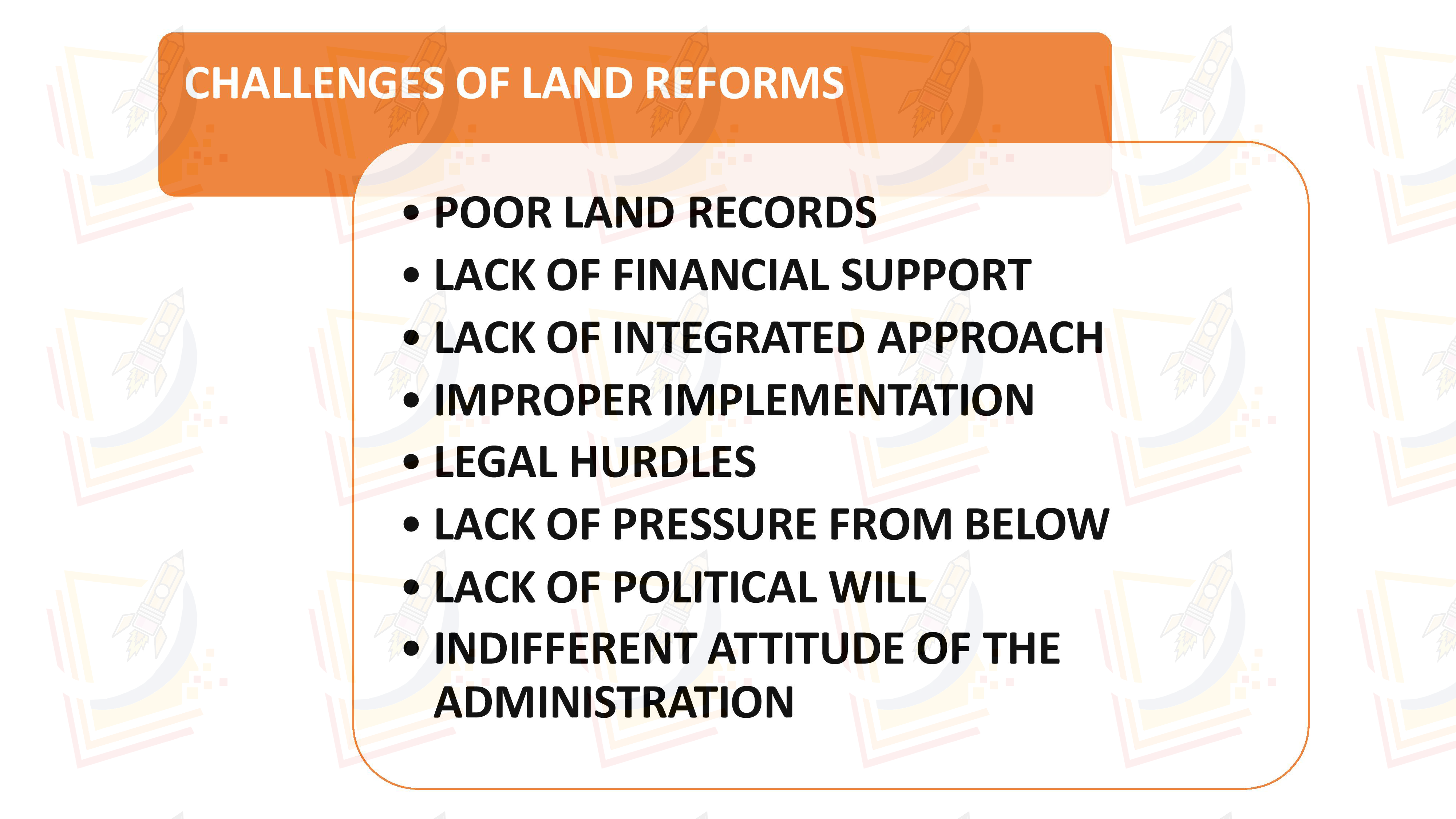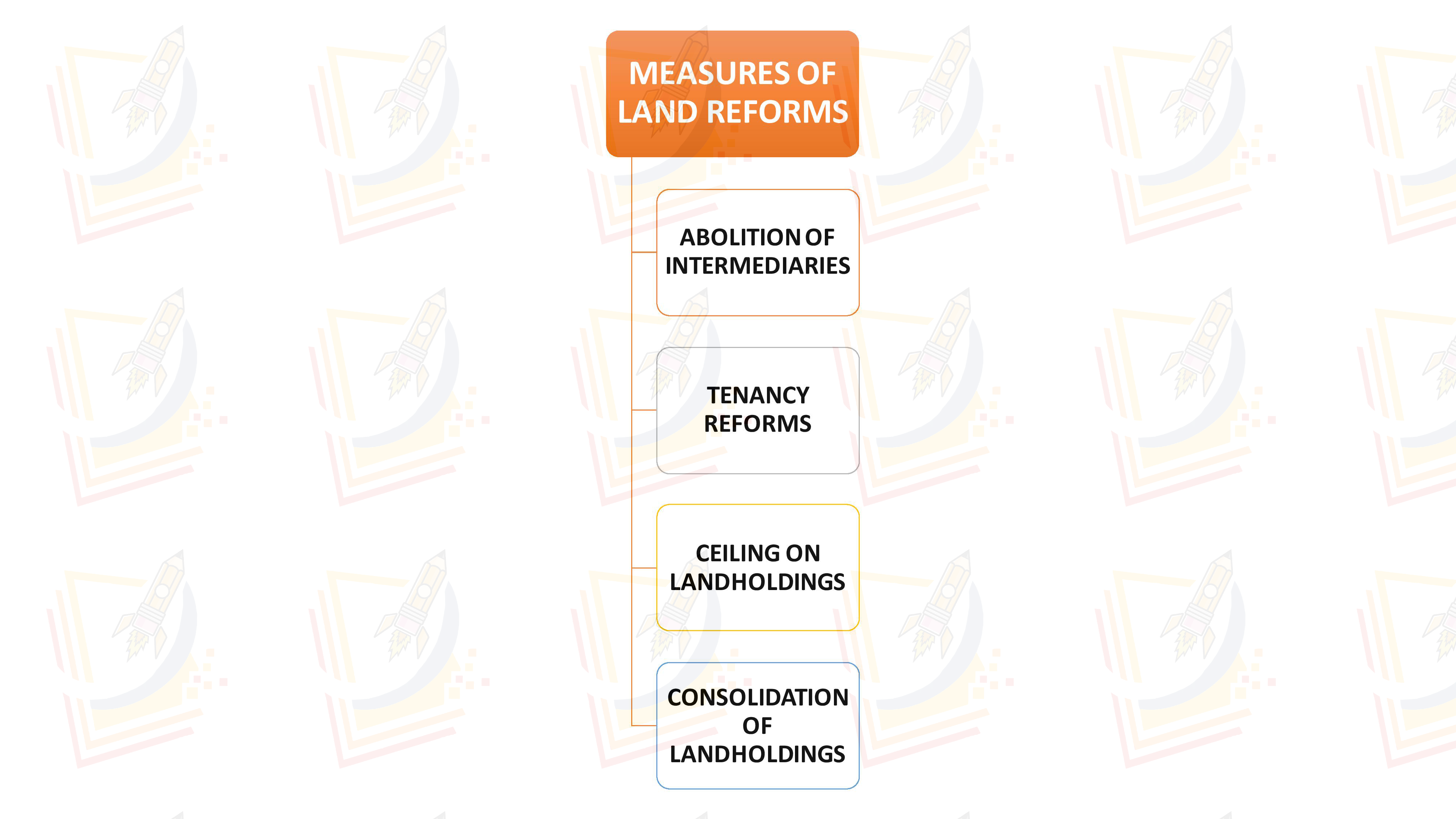INTRODUCTION
Land reform is a form of agrarian reform involving the changing of laws, regulations, or customs regarding land ownership. Land reform may consist of government initiated or government-backed property redistribution, generally of agricultural land.
MEANING OF LAND REFORMS
Land reform refers to efforts to reform the ownership and regulation of land in India. Or, those lands which are redistributed by the government from landholders to landless people for agriculture or special purpose is known as Land Reform.
NEEDS OF LAND REFORMS

- ENSURE LAND CEILING : - land reforms need to ensure land ceiling and take away the surplus land to be distributed among the small and marginal farmers.
- CEILING LIMITS :- The land reforms needs to wrongful tenancy with the ceiling limits.
- REMOVE RURAL POVERTY :- Land reforms need to remove the rural poverty. The various land reforms are been used to remove the poverty.
- RIGHT ON LAND : - land reforms was used to seek that every person have right to seek on their own land.
- INCREASE PRODUCTIVITY :- Land reforms helps to increase the productivity of the agriculture because about 75% Indian population was depend on agriculture.
- EMPOWERMENT WOMEN’S :- Land reforms provided empowerment to the women in male driven society.
IMPLEMENTATION OF LAND REFORMS
In the manufacturing process that combines labor and land, it has been observed that land ownership turns into a determining factor. The quantity and distribution of agricultural products are thus impacted. Land reforms aim to change the socioeconomic standing of the people that is dependent on agriculture in various ways. The quality and amount of agricultural lands being used productively is crucial to growth for nations with a significant agricultural base.
- The Zamindari system’s abolition and the acknowledgement of peasants’ ownership rights to the land.
- Reforms to tenancies that recognize tenants’ use of real estate and control the setting of rent.
- A drive and plea to landowners to donate arable land for the benefit of the populace and society.
- Updated records under the National Land Records Modernization program will increase transparency in the declaration of land holdings.
ADVANTAGES OF LAND REFORMS IN INDIA

- OWNERSHIP :- After elimination of middlemen i.e. intermediaries nearly 2 crore tenants became owners of the land they farmed.
- REMOVAL OF MIDDLEMEN :- A parasitic species has become extinct as a result of removal of the middlemen.
- MORE LAND :-The government has taken over more land to give those farmers who lack access of land.
- CULTIVATION :- After the land was repealed, cultivators had direct communication with the government.
CHALLENGES OF LAND REFORMS

POOR LAND RECORDS
- The major obstacle to the failure of land reforms is the lack of concurrent evaluation and reliable (current) records.
- The reporting system is unstable and unreliable after 45 years of land changes.
- There hasn't been a regular, organized evaluation of development. There are no efforts being made to conduct thorough contemporaneous reviews.
- With purposeful malice aforethought, incorrect records are maintained. As a result, it is impossible to pinpoint obstacles to the implementation of land reform.
LACK OF FINANCIAL SUPPORT
- Another obstacle standing in the way of land reform is a lack of financial backing.
- The Five Year Plans did not provide any funding specifically for financing land reform.
- Many states refused to include even the cost of such necessary items as the creation of surveys and records in their budgetary plans.
- Therefore, the poor results of its implementation are mostly attributable to the lack of proper fiscal assistance in whatever manner.
LACK OF INTEGRATED APPROACH
- The absence of an integrated approach, such as the elimination of intermediary tenures, tenancy reforms, holdings ceilings, etc., was another factor in India's failed land reforms.
- The programs are not properly coordinated. It means that programs for land reform have been seen as separate from the primary initiatives for economic development.
IMPROPER IMPLEMENTATION
- In almost all states, the revenue administration is in charge of implementing land reforms into action.
- On the other side, maintaining public order, collecting land taxes, and other regulatory duties were given top attention.
- Land reforms do not receive the needed attention as a result.
LEGAL HURDLES
- Land reform implementation in the nation is also hampered by legal issues and limitations.
- The Task Force has made it clear that "whatever small prospect of success there may have been, has entirely vanished due to the gaps in the laws and protracted litigation."
- The land reform laws had numerous flaws; some were intentional loopholes, while others were the result of poor drafting.
LACK OF PRESSURE FROM BELOW
- Except in a few scattered and isolated areas, basically all over the country, the poor peasants and agricultural laborers are passive, unorganized, and non-cooperative.
- The primary issue is that those who benefit from land reforms do not belong to a uniform social or economic class.
- Given these facts, it is understandable why there hasn't been much downward pressure for the proper implementation of land reforms.
LACK OF POLITICAL WILL
- The Task Force believed that the effective enactment of progressive land reform measures and their implementation was hindered by a lack of political will.
- Effective political support, direction, and control are necessary for efficient implementation.
- The problem of political will is vividly evidenced by the wide gaps between policy and legislation and between law and implementation.
- It is a well-known reality that the lack of political stems from the country's democratic political power structure.
INDIFFERENT ATTITUDE OF THE ADMINISTRATION
- The revenue administration is solely responsible for implementing any land reform initiatives in each state.
- But it is a sad condition of affairs because the administrative staff's attitude and even their behavior are quite apathetic.
- In addition, landlords have a lot of power over village officials like Patwaries, Karamcharies, Karnams, Symbols, etc.
MEASURES OF LAND REFORMS

- ABOLITION OF INTERMEDIARIES : Abolition of zamindari and similar intermediary tenures during 1950-55 essentially involved removal of intermediary levels or layers of various amorphous and parasitic groups in land between the State and the actual cultivators. However, such abolition of intermediaries involved compensation to the owners of land.
- TENANCY REFORMS : Tenancy Legislations have made it clear that in no case the tenants can be evicted except only in the situation where landlords themselves want to resume cultivation. Even in the event of resumption of cultivation by the owners, tenancy legislations have made it obligatory to leave a minimum area for the tenant.
- CEILING ON LANDHOLDINGS : To reduce the existing disparities in the pattern of landownership and make some land available for distribution to landless agricultural workers, the Second Plan (1956- 1961) recommended the imposition of ceilings on agricultural holdings.
- CONSOLIDATION OF LANDHOLDINGS : ragmented and subdivided landholdings as well as small-sized holdings have made Indian agriculture unremunerative. So consolidation of these lands is necessary to boost efficiency and economy in India’s agriculture. It has been completed in the states of Punjab, Haryana and Uttar Pradesh.
